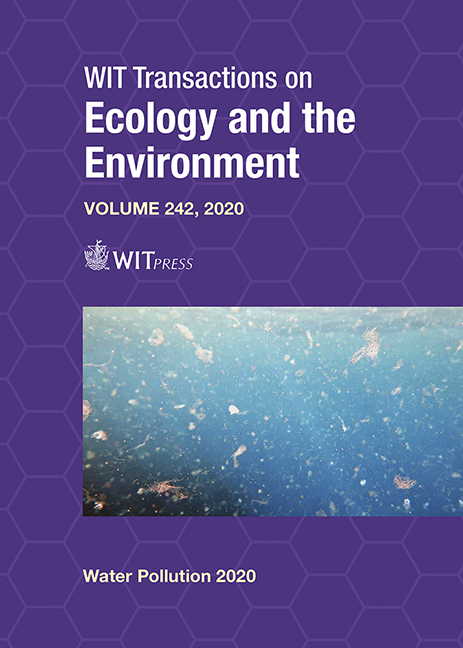MICROBIOME ANALYSIS OF THE BACTERIAL POPULATION IN A BENCH-SCALE-ACTIVATED SLUDGE REACTOR EXPOSED TO AN ARTIFICIAL INSECTICIDE SPILL
Price
Free (open access)
Transaction
Volume
242
Pages
12
Page Range
27 - 38
Published
2020
Paper DOI
10.2495/WP200031
Copyright
WIT Press
Author(s)
ÁNGELA BAEZA-SERRANO, MARIA JOSÉ TÁRREGA, JUAN F. MARTÍNEZ-BLANCH, ANTONIA ROJAS, MARTA TORTAJADA, GLORIA FAYOS, TATIANA MONTOYA
Abstract
Wastewater treatment plants (WWTPs) must process wastewater efficient and continuously. Uncontrolled toxic spills can damage the activated sludge units, reducing the treatment capacity of the bacterial culture. Consequently, water below the quality requirements could be released to the receiving environment, contributing to the loss of biological diversity, degradation of water resources and generating public health threats. The objective of this assay was to study the changes that an insecticide spill produces in the activated sludge microbiome of a laboratory-scale reactor. Next-generation sequencing was carried out to idntify species that could serve as key indicators of a negative biological process affection. The bench-scale system consisted of a vessel with primary settled wastewater feeding a 10-L biological reactor with intermittent aeration cycles to remove organic matter and nutrients. A secondary clarifier with manual purging and an external recirculation to the biological reactor completed the system. Both settled wastewater and activated sludge was obtained from the same WWTP. An insecticide containing D-tetramethrin, cyphenothrin and pyriproxyfen was previously proven to decrease significantly the nitrification activity of activated sludge with a 2 mL dose. The experiment was repeated with biological sampling to monitor activated sludge microbiome 2 hours after the spill, and on days 1, 2, 3, 6 and 7. The insecticide’s toxic effect on the biological process was demonstrated to be significant, changing the distribution of the activated sludge population. Results show that relative abundance of certain groups increased 2 hours after the spill, with one species specifically being very sensitive to the insecticide effect, disappearing completely after only 2 hours. These results show that some microorganism groups could be monitored as indicators of a negative affection in the activated sludge biological process and have a potential use to develop early detection kits for biological failures in WWTPs.
Keywords
activated sludge, metagenomic analysis, toxic spills, bacterial community





